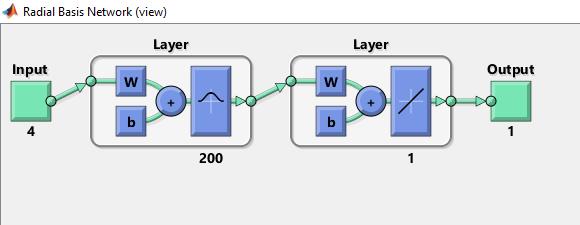PAPER TEMPLATE
- Author Name1, University/College Name, Country(E-mail ID)
- Author Name2, University/College Name, Country(E-mail ID)
- ABSTRACT
Begin your manuscript with an abstract of about 100-200 words. It should describe the key points about your research, including objectives, methodology, and major findings. After reading your abstract, the reader should have a clear idea about your research. Common and scientific names are allowed, but references to the literature and mathematical symbols/equations should not be included in the abstract.
Keywords: Number of keywords limited between 5 and 7.
- INTRODUCTION(Level 1: First Section)
The introduction leads the reader to identify the importance of research and the aim of the research and literature review (Sharma, 2011). The introduction summarizes the research, including background information about the topic, the methodology used, and the research data applied for experimental work. Throughout the paper, running text should be single-spaced, and paragraph should be double-spaced.
- LITERATURE REVIEW
In literature review different sources related to the topic should be presented. The literature should be related with either domain or method/technique/algorithm used in the correspondence research. The previous research (Loi et al., 2019)works should be described in the form of title, problem statement, objectives. Shatty et al. (2015) like all the cited literature must be written in references
- EXPERIENTIAL WORK
- Data Set ( Level 2: Subsection)
Only first and second level heading will be numbered. Out of that, all next two lower level headings should be formatted as run-in headings.
Sampling Heading (Level 3)
This will used as the inner subsection of level 2.
Sample Heading (Level 4)
The headings in the research paper should not be more than four. The following table has all the heading details.
| Table 1: Table caption should be placed within table and centred | |||
| Heading Level | Writing Examples | Alignment | Font Size and Style |
| Title | TITLE | Centre | 14 point, Bold, Times New Roman |
| Level 1 | 1. INTRODUCTION | Left | 12 point, Bold, Times New Roman |
| Level 2 | 1.2 Subsection | Left | 10 point, Bold, Times New Roman |
| Level 3 | Run –In Headings | Left | 10 point, Bold, Times New Roman |
| Level 4 | Running Text | Left | 10 point, Times New Roman |
The cell alignment property of the table is based upon research matter.
Equations are centered and written using the equation box. Equation number is right-aligned enclosed in small parenthesis.
A = π r² (1)
Please try to avoid rasterized images for line-art diagrams and schematics. Instead of this, use vector graphic image similar to the following:

For the citation of references, you will use the following format:
- Sharma (2010): This will be used when author is single and start with author’s last name.
- Roy et al.(2019): This will be used for multiple authors.
- (Roy et al., 2019): This will be used in running text.
All the literature listed in the references should be cited at least once. Every reference should be cited and every citation should be in the reference list
- CONCLUSION
The main outcome of the research is written in this section. The author must mention the conclusion of the research in brief. The limitations and the future work of the research can also be mentioned here.
- REFERENCES
Abou-Allaban, Y., Dell, M. L., Greenberg, W., Lomax, J., Peteet, J., Torres, M. & Cowell, V. (2006). Religious/spiritual commitments and psychiatric practice. Resource document. American Psychiatric Association. http://www.psych.org/edu/other_res/lib_archives/archives/200604. pdf. Accessed 25 June 2007. (For Online Documents)
Calfee, R. C., & Valencia, R. R. (1991). APA guide to preparing manuscripts for journal publication. Washington, DC: American Psychological Association. (For Books)
Doe, J. (1999). Trivial HTTP, RFC2169. ftp://ftp.isi.edu/in-notes/rfc2169.txt. Accessed 12 Feb 2006. (For FTP Site)
German emigrants database (1998). Historisches Museum Bremerhaven. http://www.deutsche-auswanderer-datenbank.de. Accessed 21 June 2007. (For Online Databases)
ISSN International Centre (2006). The ISSN register. http://www.issn.org. Accessed 20 Feb 2007. (For Organization site)
Jana, R.K., Sharma, Dinesh K., & Chakraborty, B. (2016). A Hybrid Probabilistic Fuzzy Goal Programming Approach for Agricultural Decision-Making. International Journal of Production Economics, 173 (2), 134–141. (For Journal article)
O’Neil, J. M., & Egan, J. (1992). Men’s and women’s gender role journeys: Metaphor for healing, transition, and transformation. In B. R. Wainrib (Ed.), Gender issues across the life cycle (pp. 107–123). New York: Springer. (For Book Chapters)
Slifka, M.K., & Whitton, J.L. (2000). Clinical implications of dysregulated cytokine production. Journal of Molecular Medicine, 78, 74–80 (2000). doi:10.1007/s001090000086.(Journal article with DOI (and with page numbers))
Schultz, S. (2011, December 28). Lessons to be learned in systems change initiatives. Independent, p. 5. (For Newspaper articles)
Note: All the references should be arranged in the alphabetical order as per the last name of first author.
ABOUT US

This work is licensed under
a Creative Commons
Attribution-NonCommercial 4.0 International License.
© 2020 GKF Design & Developed by Aon Digicon LLP





